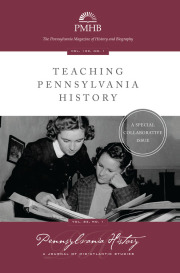The Nature and Pace of Change in American Indian Cultures: Pennsylvania, 4000 to 3000 BP
Main Article Content
Abstract
The region now known as Pennsylvania has been occupied by humans for at least 11,000 years—it boggles the mind to think about it. As the population gradually increased through time, the mode of settlement and subsistence changed as people developed cultural means to cope with ever-increasing
competition for limited food resources. These changes are most apparent when viewed from the extreme ends of this continuum. During the earliest times, small groups of highly mobile people occupied large territories in which they hunted and gathered naturally occurring foods. By the time of
European contact, relatively large populations resided in fortified villages and relied heavily on corn-based agriculture for sustenance. The papers in this volume focus on the interval between 4,000 to 3,000 years Before Present (BP), during which the transformation between these two extremes occurred at an accelerated rate. Archaeologists aptly refer to this time between the tail end of the hunter-gatherer (Archaic) period and the beginning of the horticultural (Woodland) period as the Transitional Period. Most contributors to this volume accept the premise that the rapid changes occurred as a result of natural population growth in conjunction with detrimental climatic and
environmental change.
Article Details
Pennsylvania History is the official journal of the Pennsylvania Historical Association, and copyright remains with PHA as the publisher of this journal.
